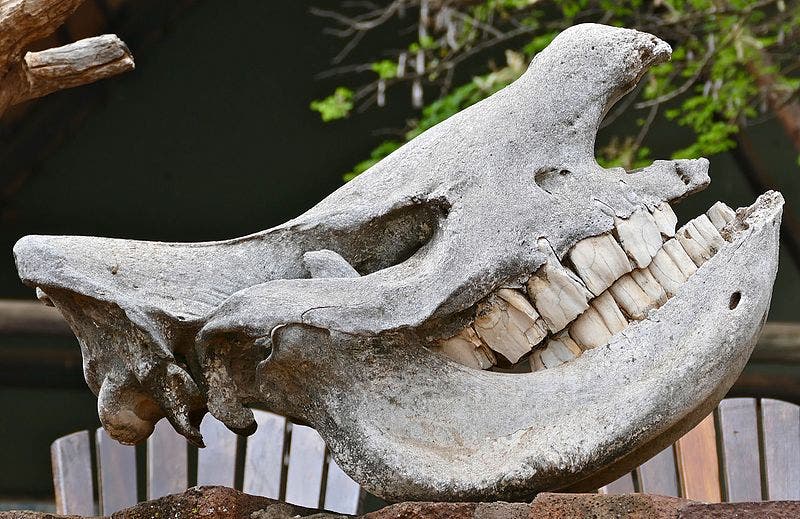In Kenya, the last male northern white rhino (Ceratotherium simum cottoni) in the world isn’t faring well — the animal is past its prime and in declining health. With time running out, a global team of scientists and conservationists are trying to save the subspecies from extinction with help from the last two surviving females.

Image credits Heather Paul
It reads more like the plot of the next action-packed blockbuster, but this is actually as real-life as it gets. Those involved in the project hope to use in vitro fertilization (IVF) to create viable white northern rhino embryos and save the species. The plan hinges not on the male, an elderly, Tinder-enabled rhino named Sudan, but rather on his daughter Najin and granddaughter Fatu. Since the rhinos can’t reproduce naturally (Sudan’s past his prime) the females’ eggs will have to be extracted and the fertilization performed out of body.
Despite not being as smooth with the ladies as he once was, Sudan is quite a celebrity. He attracts thousands of visitors each year to the Ol Pejeta Conservatory, where he’s housed, and Tinder listed him as the “The Most Eligible Bachelor in the World” last year. But he is getting old, and a recent medical complication — a stubborn leg infection — may force his caretakers to euthanize the beast.
However, the passing of the last male white rhino in the world isn’t as bad for the species’ survival as you would believe:
“Sudan has been technically infertile for many years, so him dying is not going to affect the possibilities of recovery for the northern white rhino as a species,” Richard Vigne, the conservancy’s CEO, said in an interview with The Associated Press.
That’s not to say that the outlook is good: while semen from other northern white rhinos has been harvested and stored in various locations around the world, it’s critical that the conservancy keeps the two females alive “until such time when the protocol or technique for in vitro fertilization has been perfected so that we can begin that process,” Vigne adds. The 27-year-old Najin has weak hind legs and can’t support the weight of a pregnancy, while 17-year-old Fatu can’t carry an embryo because of a uterus problem.
Efforts to pull the species from the jaws of extinction have brought together institutions from around the world, such as the San Diego Zoo Global in the United States, the Leibniz Institute for Zoo and Wildlife Research in Berlin, and Embryo Plus, a South African company specializing in IVF procedures. In vitro fertilization has seen wide use in the livestock industry.
Last of their kind?

Despite all the bright minds pitching in, it’s an uphill battle. The team has very limited genetic material at its disposal to save the northern white rhino with. The lack of living individuals further compounds this problem — the team plans to use another subspecies, the southern white rhino, for surrogate mothers. A non-surgical method that would remove rhino eggs with a needle inserted through the rectal wall into the ovary is being developed, said Morne de la Rey, director of Embryo Plus. Further plans include using stem cells and other advanced technologies to re-establish viable populations of northern white rhinos in the future.
While the project has been met with praise — particularly because the work performed here could be used to save other endangered species — it has also gained some criticism. Some conservationists believe the focus should fall on other endangered species, such as the Javan and Sumatran rhinos, who are reeling from more tangible issues such as poaching and human encroachment on their habitats. The grimmest outlook, one which London-based Save the Rhino conservancy group holds, is that the plan might just be too late to save the northern white rhino.
“With small chance of healthy new calves, and limited place in their historic range to go, Save the Rhino believes that the best outcome will be to put our efforts and funding — including research into IVF — into saving the species which do still have a chance,” it said on its website.
“The real fight for the survival of northern white rhinos in their natural habitat was lost over a decade ago,” said Jo Shaw, African rhino expert with the WWF conservation group. “Large mammals, like rhinos, should be seen as symbols of large functioning ecosystems and we must focus our efforts and energy on their protection and ongoing survival within these vital landscapes around the globe.”
Northern white rhinos suffered immensely during the conflicts that swept through their range in central Africa; the last individuals to be spotted in the wild were observed more than a decade ago in Congo’s Garamba National Park, a frequent target of well-armed poachers. Sudan, the last male northern white rhino, was born in the country whose name it bears and taken to a Czech zoo. In 2009, he was transferred to Kenya along with Najin, Fatu, and another male who died in 2014.


